10 Tips for an Awesome (& Profitable) Garage Sale
Over the years, I have held many, many garage sales. We have one (at least) each time before we move; and I’ve also conducted two major estate-style sales while helping my father downsize. Over the years, I’ve honed in on a “formula” for a successful sale…as in, if you follow these particular steps, “You too can have a successful sale, get rid of (most of) your junk, and make some good money!” (imagine that all said in an infomercial voice!) Now, so much of a yard sale’s success is dependent on where you live, what kind of stuff you’re selling, and the weather forecast; but by implementing these garage sale tips, you are much more likely to have a smooth and stress-free sale that is super profitable too!
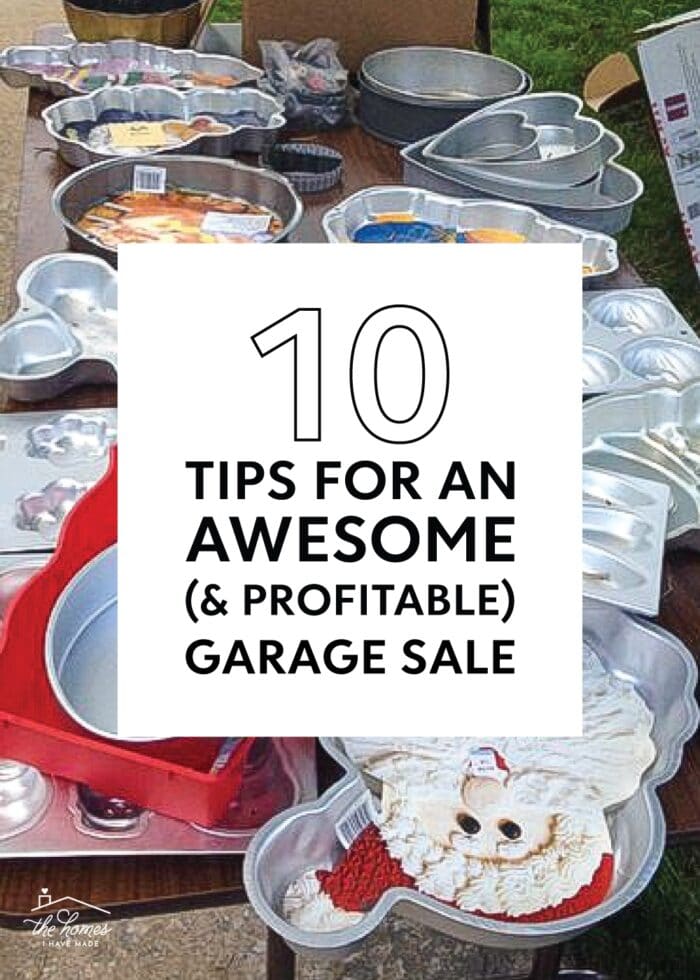
1. Price Your Items
Price Every Single Thing
My absolute number one garage sale tip is to put price tags on everything. Yes, everything. Sure, it can be a pain and time-consuming, but it is SO worth it on sale day….especially if you have a lot to sell and several helpers cashing people out.
We’ve learned that buyers are much more likely to scoop things up when they don’t have to approach the host to find out the price. Checking people out moves faster since you don’t have to come up with (or add up) prices off the top of your head; and it ensures you price items consistently based on quality (and not on a whim or from pressure from enthusiastic bargainers).
TIP! Skip yard sale price stickers from the store because they don’t have a wide-enough variety of prices, nor do they stick on very well. We always print our own price tags so we have sheets and sheets of lots of different prices. Once they are printed, it’s quick to go item by item and stick a label right on. See More: Free Printable Garage Sale Price Tags
No Bargaining Policy
This might not be right for everyone but it has consistently worked very well for us in reducing the stress that surrounds pricing. Instead of pricing high and expecting people to bargain, price low and make a “no bargaining” policy.
Sure, there will always be people who try to talk you down no matter how low your prices are. But having the “Everything is priced to sell, and we aren’t bargaining today” phrase in your back pocket will make dealing with hagglers so much easier. Some people may put items down and walk away, but most will just pay you what you’re asking (as long as the price is fair).
The main exceptions to the “no bargaining” policy is toward the end of the sale when you just need items gone. You can also consider negotiations on bigger, more expensive items that have greater room for price drops.
2. Organize & Categorize
Not just for your own sanity, but to help your shoppers too, purge out true junk and organize similar items into into clearly shop-able categories: home decor, cooking/baking, tools, toys, recreation, furniture, baby clothes, kids…you get the idea. This will make for easy and logical setup and also help shoppers who are looking (or not) for particular items.
We receive so many compliments on how well-organized our sales are, and I really think our presentation directly influences how much stuff we are able to sell at any given yard sale.
TIP! Consider clearly labeling your sale areas, so shoppers can easily see what you have from the sidewalk or as they drive by. See More: Ready-to-Print Garage Sale Signs
3. Use Tables
When setting up items to sell, get it up off the ground whenever possible. Obviously, this doesn’t apply to furniture or large/heavy items. But for dishes, glassware, kitchen utensils, small appliances, craft items, records, movies, knick knacks, and (most especially) books, folks are much more willing to take the time to peruse all your goods if they can stand upright (rather than hunch or sit on the ground).
In our experience, if items aren’t selling down on the ground, as soon as we move them up onto tables, they’re gone!
Ideal Setup
Tables are most ideal for garage sales, but don’t feel like you have to rent or use anything fancy. We’ve used everything from long 6′ event tables and small square card tables to sheets of plywood setup on saw horses. Just make sure whatever you use is sturdy enough to hold your items safely even when loaded up or leaned on.
Instead of setting up your tables horizontally (like a checkout counter in a store), run tables down the center of your area. This allows both sides of the table to display items, and people can browse from both sides. This is especially important for large, busy sales.
Presenting Clothes
If you have lots of adult clothing to sell, make an effort to get as much of it hung up as possible. You can order inexpensive clothing racks, place broom handles between two ladders, or even hang hangers on gutters or edging along garage door openings. Allowing people to fully see (and even try on) clothes will make them move much quicker.
For children’s clothing, organizing by size and gender is usually the best. While hangers and racks aren’t usually necessary, large bins make it difficult for people to sort through. Instead, consider laying out clothes (even in piles) onto large blankets or tables.
Consolidate as the Sale Progresses
In the same way that you aren’t likely to shop from a store with bare shelves, try to make your sale look fully stocked…even as your items dwindle. As items sell, take time to consolidate what’s left, reposition items that aren’t selling in their current spot, and check to make sure price tags are still present and visible.
4. Consider Multi-Day Sales
While some of my garage sale tips in this post might be no-brainers, this next one was new to me and the most surprising: consider a multi-day sale! Although you can do a Saturday-Sunday combination, we have much more success with the Friday Afternoon-Saturday Morning timeline instead.
Friday afternoon sales will likely attract more neighbors, work crews (i.e., yard crews, cleaning crews, delivery people) and the coming-home-from-work crowd. At least in our experience, these are people who are more than likely to take items as they are priced and may even snag the really good stuff. The Saturday morning shoppers will likely be more hard-core bargain hunters who are holding out for deals.
Regardless of who passes through, it’s a pretty simple concept: the more hours you have your stuff out, the more likely you are to get rid of it and make even more money!
5. Accept Alternative Payments
Cash
Cash is certainly king at yard sales. It’s the safest, quickest, and easiest way to take payment, especially if you don’t know your customers. We still prefer cash above all other options, and always have a good amount of $1s, $5s, and $10s on hand to make plenty of change (for the eventual shopper who shows up with a $100…happens every time!) Using an apron or fanny pack can help keep your cash safe and organized throughout your sale.
Digital Payment
These days, a lot of people are able to make payments digitally with their smartphone via apps like PayPal, Venmo, or Zelle. Offering this option to potential buyers might allow you to make more sales (especially on big-ticket items), and these transfers usually come through immediately so you can have peace of mind letting customers walk away with your items.
Credit Cards
If you are running a large estate sale or selling very expensive items (e.g., electronics, furniture, or in our case…fabric), it is very convenient to accept credit or debit card payments. You now can order credit card readers for your mobile device (e.g., Square) and make the transactions with very little hassle (although you may have to pay a small fee for each purchase).
6. Advertise
The success of your sale is directly correlated to how much foot traffic you get: no customers means no sales! As such, use every available means to get the word out about your sale.
Digital Advertising
Start with free digital marketing options such as Craigslist, Facebook Marketplace, Facebook Groups, Twitter, workplace message boards, personal social media posts, and email invites to advertise your sales.
TIP! Go live! Once you have your sale all set up, take fresh pictures and/or videos and add them to your online listings to show what you have available!
Paper Advertising
Although digital advertising may reach more people, paper advertising can better at reaching your surrounding community. Post bright, clear signs (markers on neon poster board is more than sufficient!) at all entrances to your neighborhood and even in nearby intersections that get heavy traffic. Paper flyers can also be printed and hung at nearby college campuses, grocery stores, playgrounds, and other frequented areas. Finally, if you have the means to do so, a simple ad in the local newspaper may reach a certain population that doesn’t use online forums.
7. Sell Furniture Online Instead
In our experience, garage sales are not the place to sell furniture. No matter the condition, style, or price, yard sale shoppers are generally not prepared to take home large pieces of furniture.
If you have furniture to sell, Facebook Marketplace will be a much more successful avenue for offloading these items at fair, solid pries. You may even consider Ebay if you have antiques, collectables, or unique items.
TIP! Although furniture doesn’t tend to sell at garage sales, it DOES catch people’s attention and gets them to stop. So if you are selling furniture, consider dragging it out to the curb while also posting it to an online marketplace. You’ll bring in the foot traffic while also getting the item out of your house and ready for eventual loading into a car when an online buyer arrives.
8. Bundle At Every Opportunity
Whenever you can, bundle similar items together and price accordingly. Examples include: sets of dishes, piles of dish towels, series of cookbooks, matching tablecloths and napkins, purses with wallets, collections of weights, etc. Not only does a “set” look more appealing to buyers, but it’s a more effective and efficient way to move your stuff out!
TIP! Ziplock bags, baskets, boxes, and clear packing tape are our go-to supplies for grouping items together into clear, obvious bundles that are priced and sold as one item.
9. Holding Piles
If you are running a very large or busy sale (or if you are selling items that are large/bulky), you might run into trouble keeping track of who has claimed what.
For example, at our estate-style sales, people were scooping up items quickly and found themselves with full hands. So they would would make piles off to the side while they continued to shop. These piles would then get shopped from by other customers, leaving the original customers sad and cranky because they lost out on items they technically had first.
To mitigate this situation, I recommend having a dedicated helper at a “Holding Zone,” outfitted with cardboard boxes and/or large grocery bags with sticky notes to write names on. This can help people safely set items aside while they continue to shop (which means you’ll clear out more items and make more money overall!)
TIP! Even if you don’t have enough stuff to warrant a “Holding Zone,” consider providing shopping bags. This is especially helpful if you have lots of smaller items to sell.
10. Once It Goes Out, It Doesn’t Come Back In
Our other main garage sale rule is: “Once it leaves the house, it doesn’t come back in.” So with the exception of high quality items that you want/need to get decent money for, you’ll need to figure out what to do with your remaining items once your garage sale is over.
The Power of Free
By the end of your yard sale…especially if you did a multi-day sale and priced things reasonably…you will likely be left with the “bottom of the barrel” items. For these things, you might consider leaving them outside (overnight if allowed) with a large FREE sign on it. You will be amazed what people will take when it’s free…and this can greatly reduce the load you need to haul off to the donation center yourself.
TIP! Update any of your online listings with fresh pictures and add “Free” labels/hashtags so people can come by to snag whatever you have left.
Load Up For the Donation Center
After a well executed yard sale and offering items for free, now is the time to load items directly into your car and take them straight to the donation center. Don’t bring items back into your house and don’t be tempted to give it another try. Know that you did your very best to get some cash for your unwanted things, and then let the remainder go.
BONUS | How to Sell Unwanted Craft Supplies
I feel like this topic warrants its own post, but I’ll cover it here for now. Crafters (especially quilters) tend to accumulate a lot of stuff (e.g., fabric, notions, supplies, books, patterns, etc). And these craft supplies are quite often very expensive and high quality. While some craft supplies can be donated, it can also be incredibly profitable to sell these items at a dedicated “Craft Estate Sale.”
My mother passed away with rooms and rooms (and rooms!) full of everything from fabric and yarn to stained glass, ribbon, beads, stamps, machines, and SO much more. We made about $15K selling off her “craft stash” using the tips above, as well as these unique pointers:
Separate Crafts from Other Goods
If you have a lot of craft supplies to sell, I highly recommending selling it separately from a general household yard or estate sale. A dedicated “Craft Estate Sale” will attract a very specific group of shoppers who will recognize and know the value of what you’re selling (and will be much quicker to scoop it all up and pay really good money for it).
Focused Advertising
To sell off specialty supplies, reach out directly to local crafters. This can include quilt groups/shops, stamp groups, stained-glass groups, knitters, etc. If craft enthusiasts hear about deals, they will surely show up (in droves!)
Categorize By Craft
Crafters tend to do specific hobbies and therefor shop for specific things, so try to organize your sale by craft type. Have all the fabric in one spot, all the yarn in one spot, all the stamps in one spot to help shoppers see everything you have a particular category.
Bundle
The bundling technique mentioned previously is also especially helpful when selling off large amounts of craft supplies. Matching skeins of yarn, coordinating cuts of fabrics, sets of threads, and more can be bundled together and sold as single items. Also, smaller items like zippers, elastic, rolls of ribbon, stamps, cookie cutters, and other gadgets can be assembled into “grab bags” and priced super cheap. People are quick to scoop up bargains like this, and you won’t be left with odd spools of ribbon, random zippers, or other small things.
Make Items Browse-Able
Crafters will spend time perusing books and patterns, looking for ones they don’t have or ideas for their next project. I said this above, but it’s worth repeating here: have your books, patterns, fabric and other “browsable” items up at waist height. We sold every last book because we had them displayed in a fashion that customers could easily sort through.
Weigh Fabric
We had about 2,500 yards of fabric to sell, and it was in every form you can imagine: yardage, fat quarters, scraps, sets…you name it! There was no way to efficiently measure and price each and every piece, so we decided to sell fabric by the pound. Yep – you read that right!
One pound of quilting cotton is approximately 3 yards. We sold fabric for $10/pound, which worked out to about $3/yard.
I cannot recommend this approach more. You will still sell the fabric at a too-good-to-be-true price that will entice crafters, but in a way that is efficient, manageable, and easy to calculate.
To make it work well, place large signs around your selling area to explain the system; and use a digital kitchen scale to get quick and precise weights. By using fabric weight instead of yardage, our customers were happy, we were efficient…and we sold a TON of fabric.
Need More Help Decluttering Your Home?
Here are my very best decluttering tips, tricks, and solutions!
- Learn How To Organize Any SPACE In 5 Steps
- Keep or Toss: Questions to Consider When Decluttering Your Home
- Donate Versus Sell | Getting Rid of the Stuff You No Longer Love
- 10 Tips for an Awesome (& Profitable) Garage Sale
- How to Declutter Your Entire Home Before a Move
- How to Declutter Your Kitchen from Top to Bottom
- Does It Spark Joy? My 1st KonMari Experience
- How to KonMari Craft Supplies
- What Happened When I Got Rid of Half My Kid’s Toys
- Helping Your (Senior) Parents Declutter | My Real Life Tips!
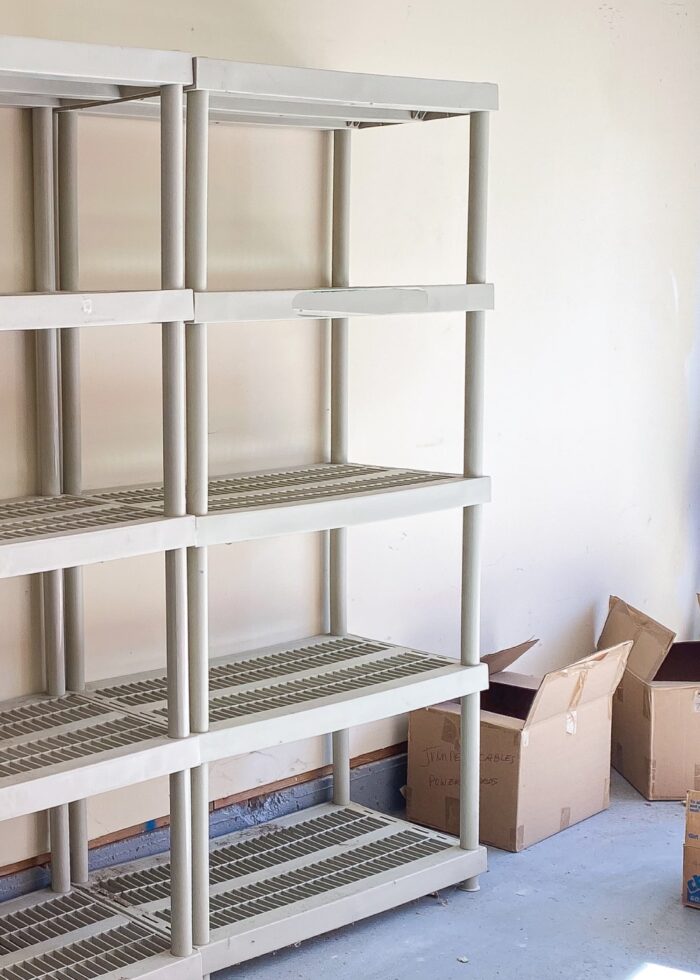
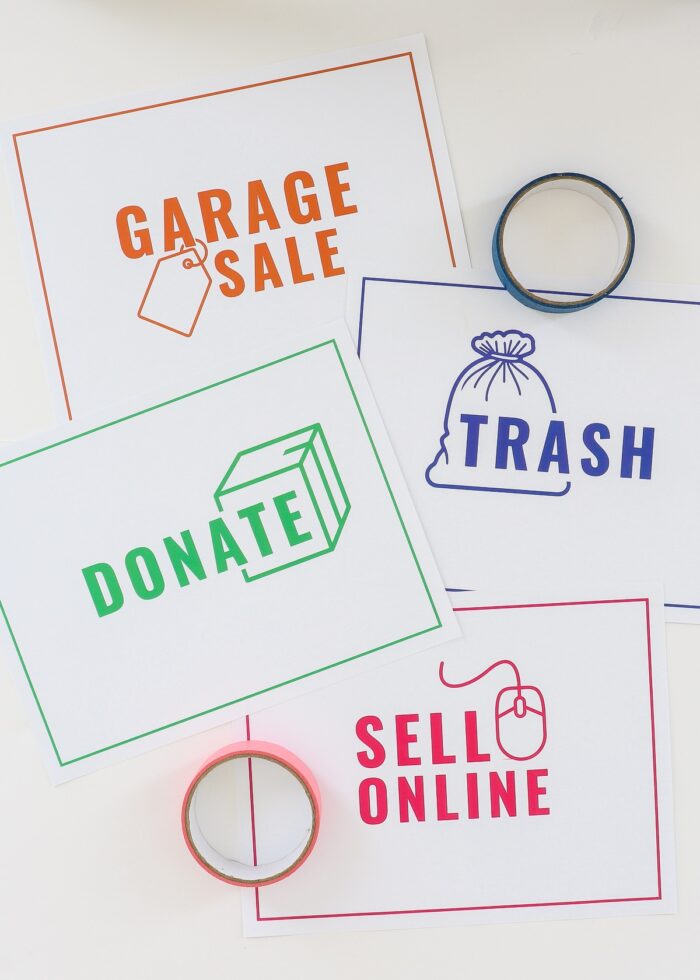
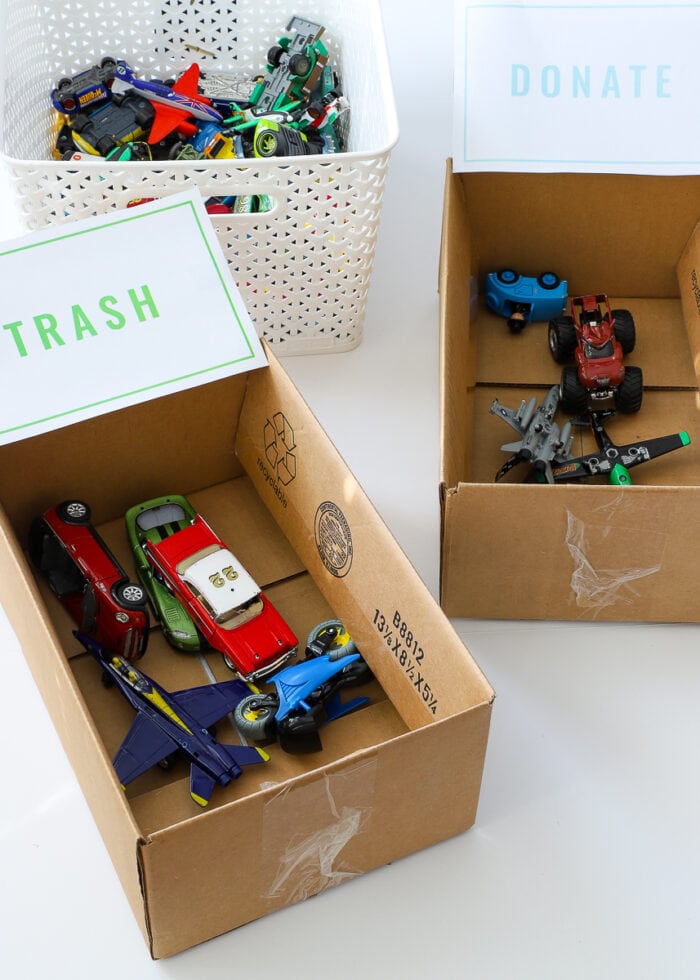
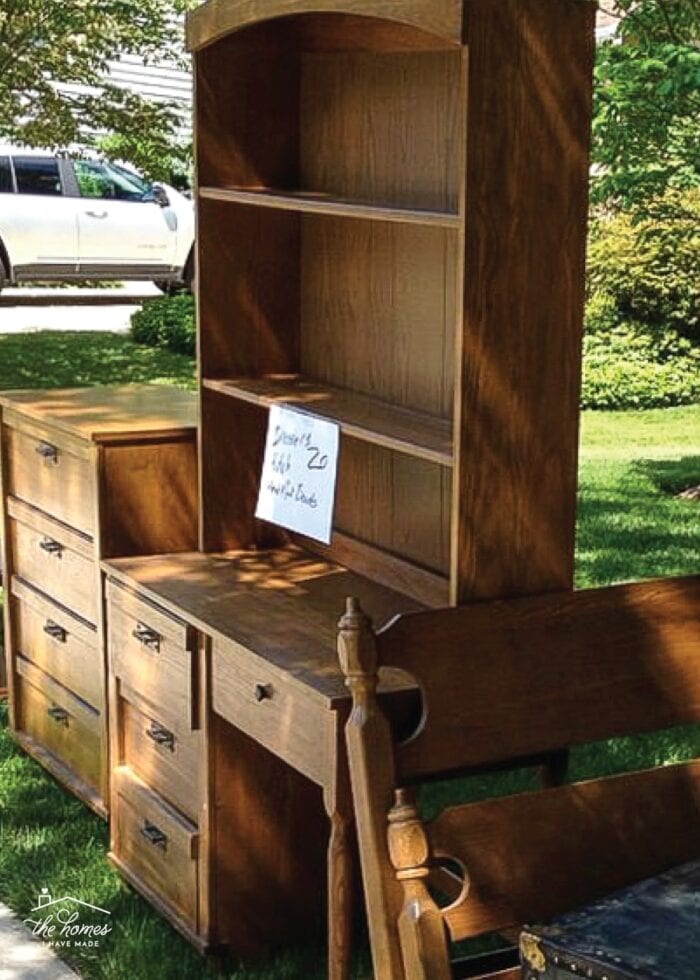
Phew! I hope these garage sale tips have you feeling ready and motivated to tackle your next sale and make some real money off your unwanted items! Do you have any rockstar garage sale tips that you swear by? Now that I’m gearing up for our next pre-move sale, I’m ready to print out all my price tags, laminate my category signs, and start making some extra cash!
Megan


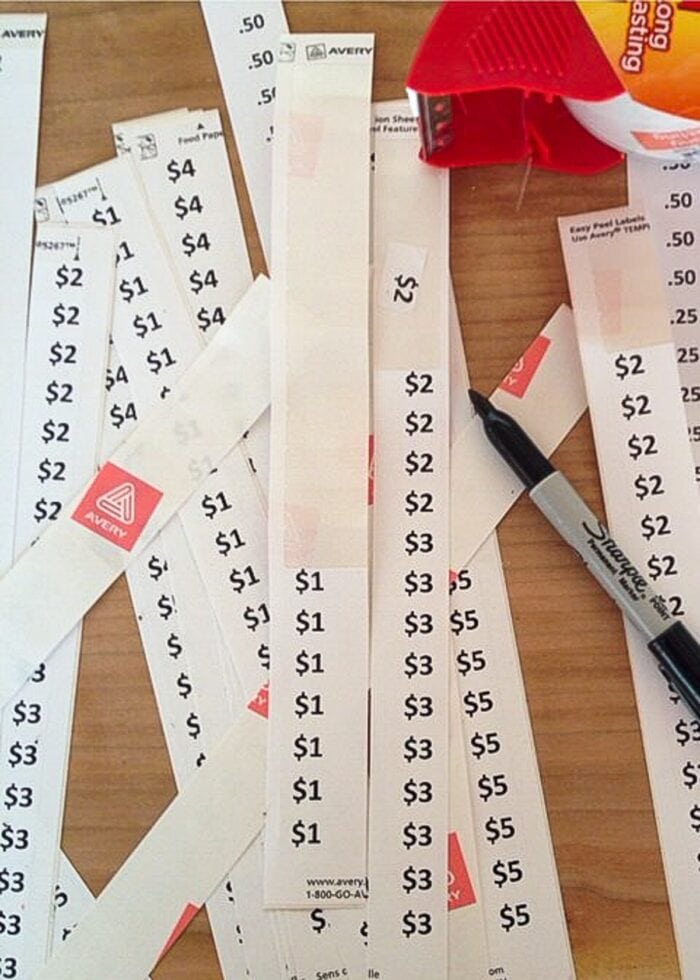
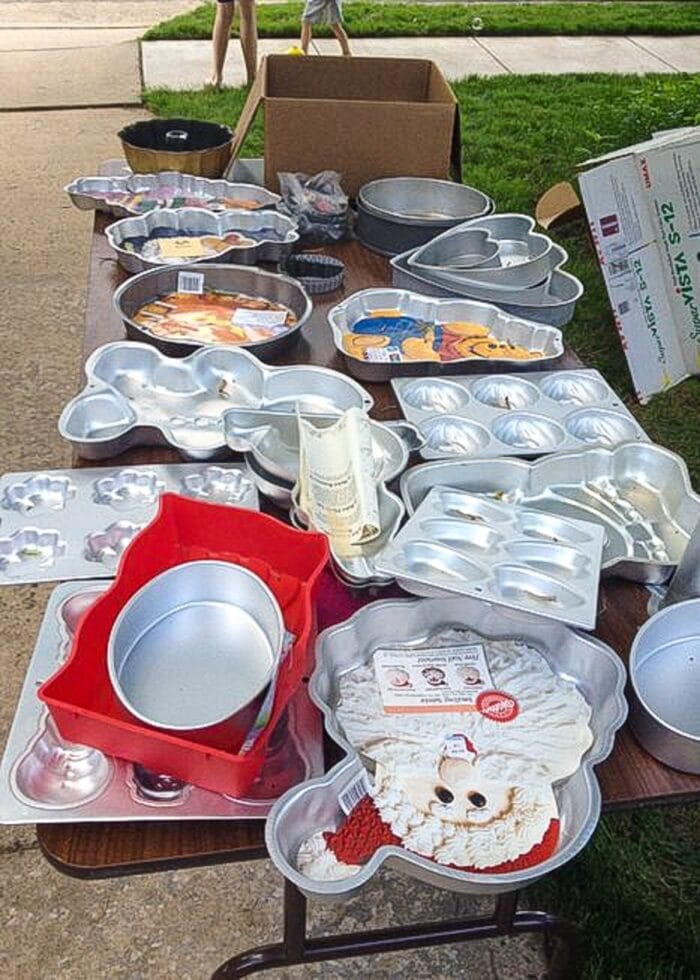
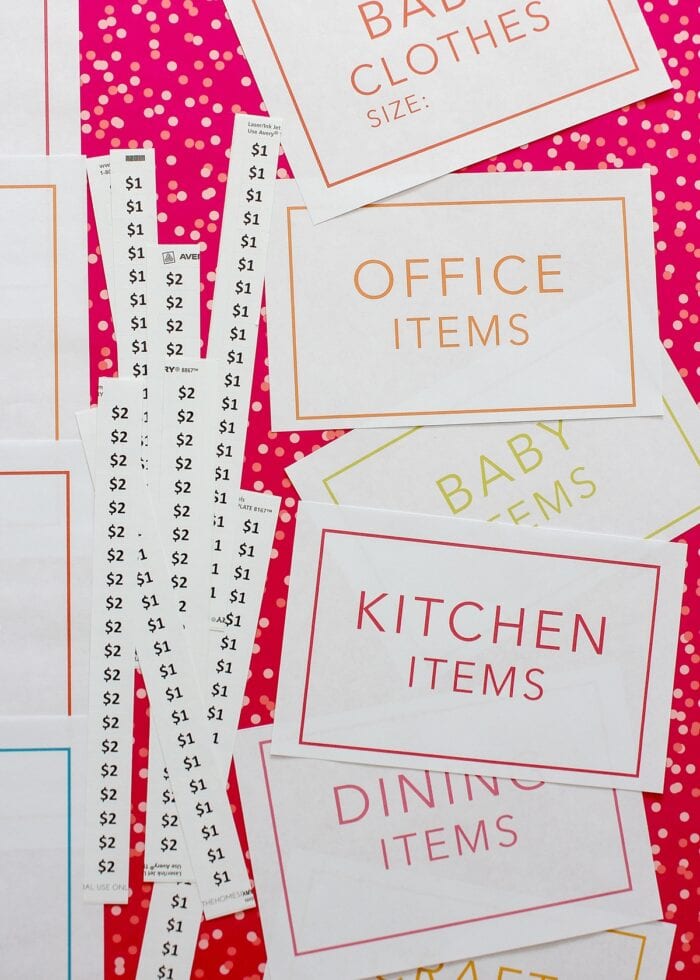
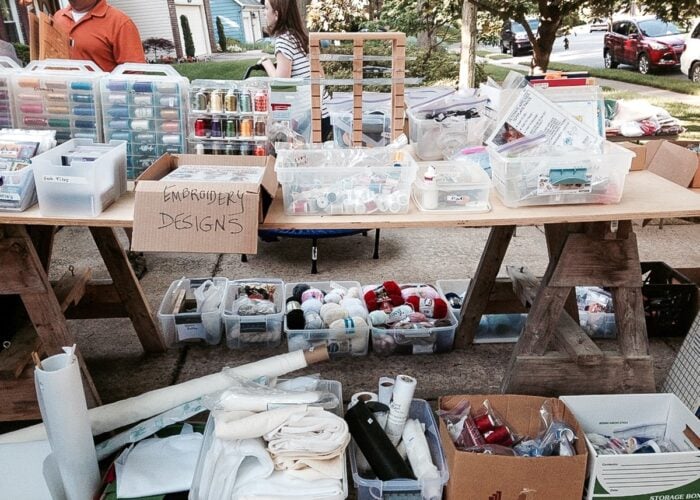
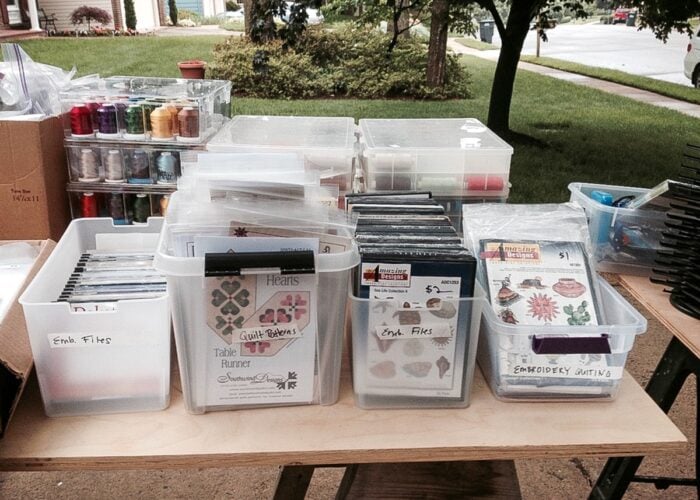
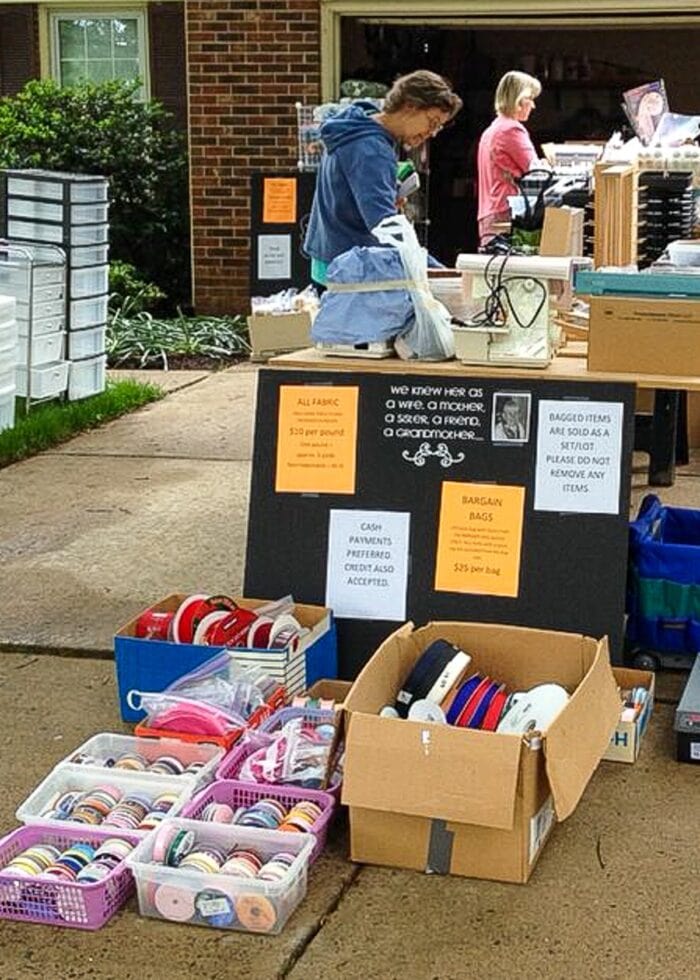
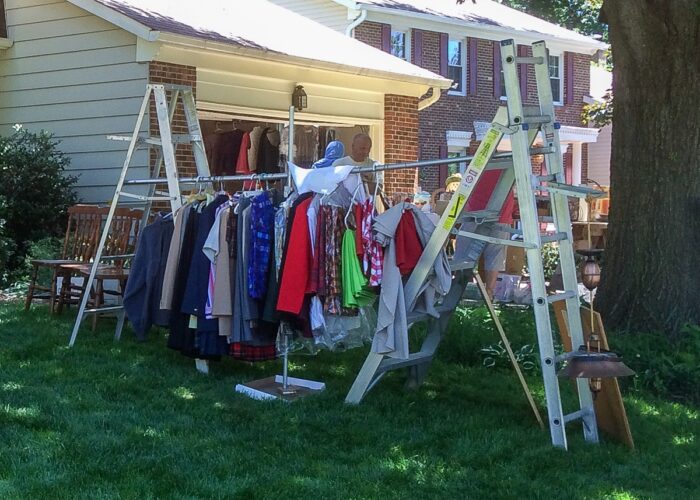
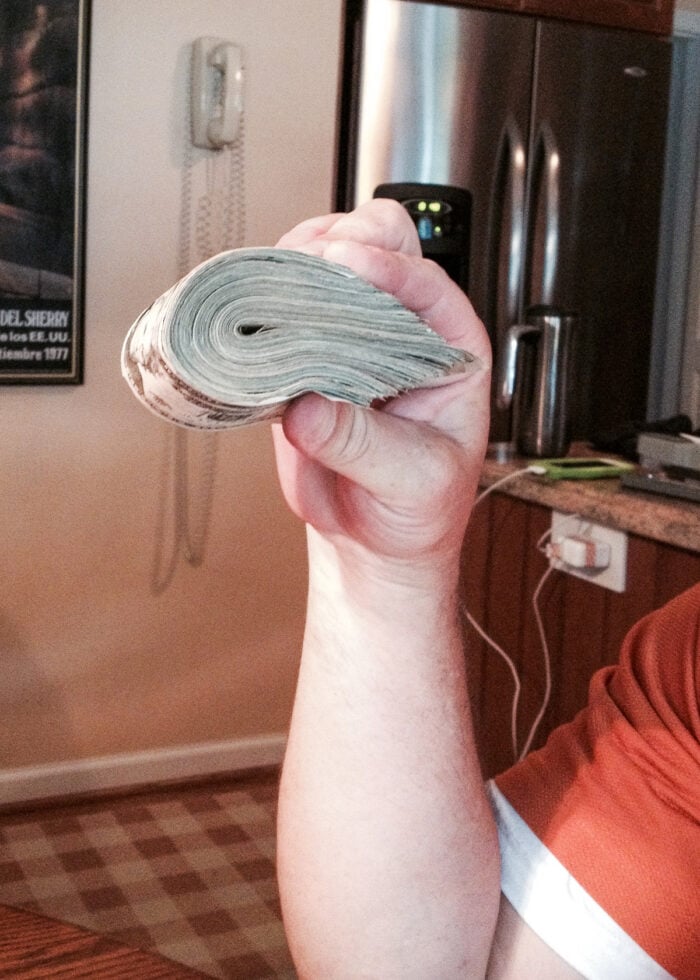
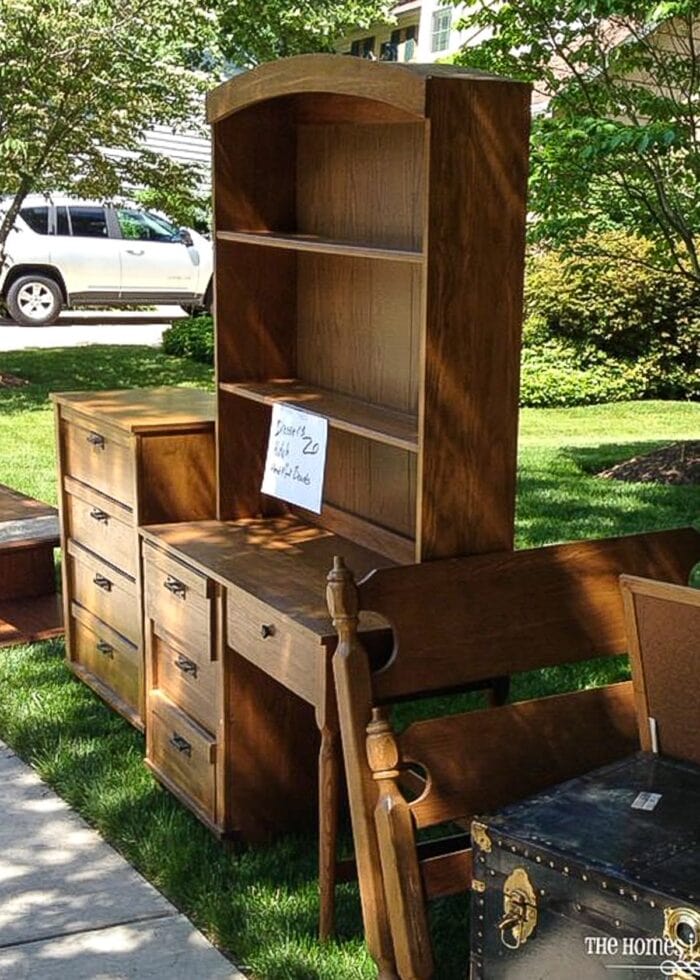
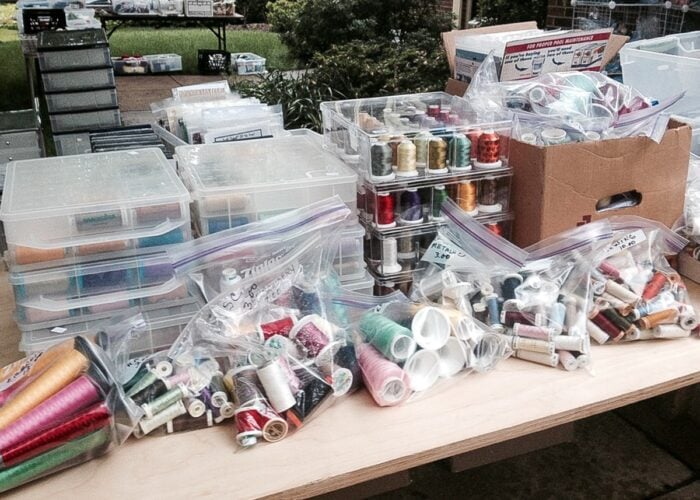
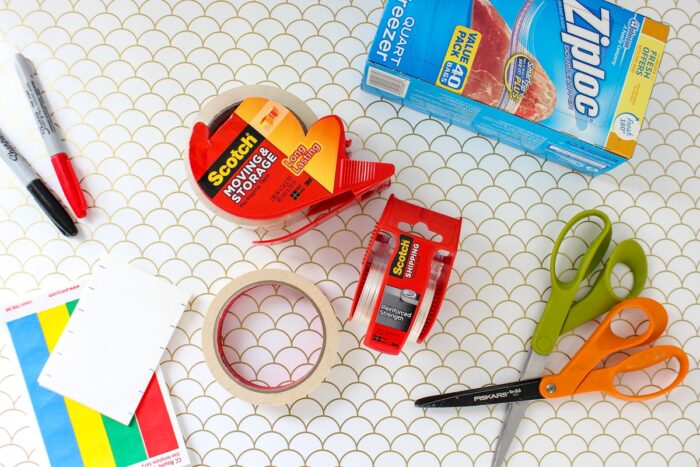
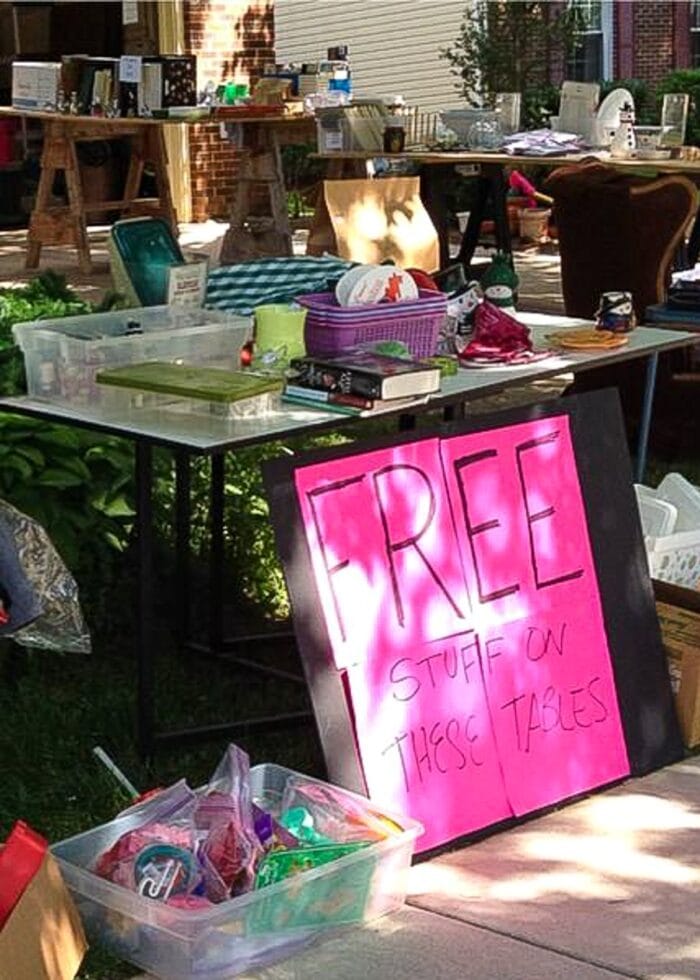
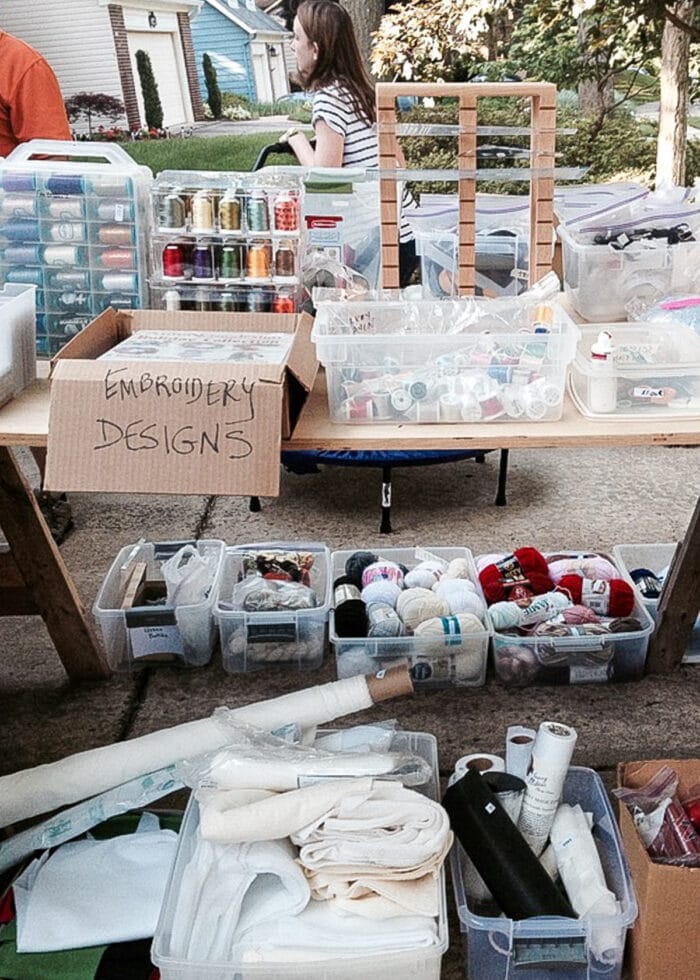
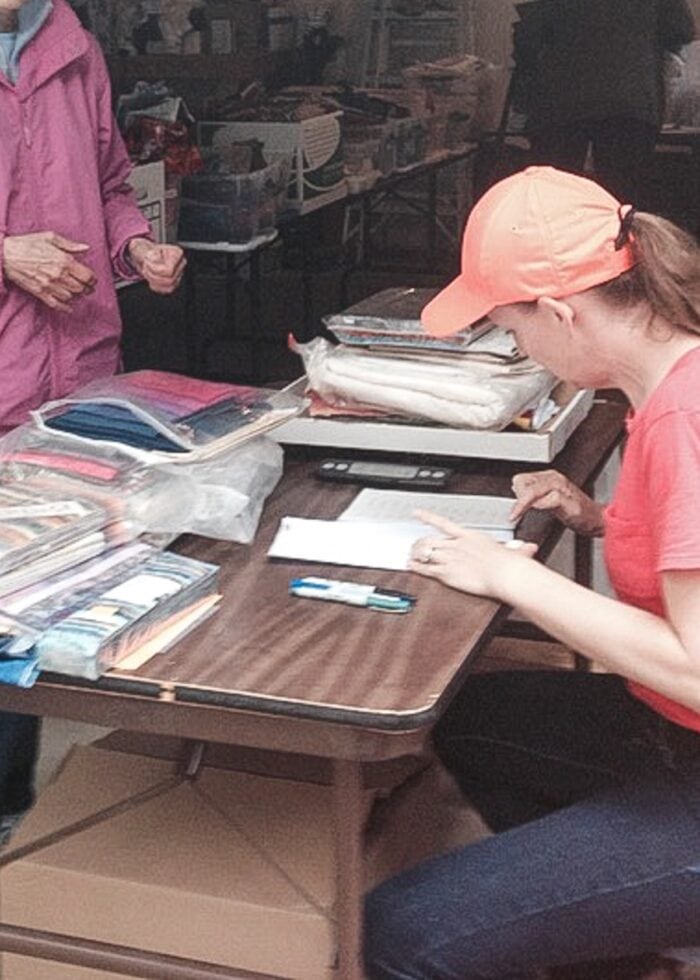
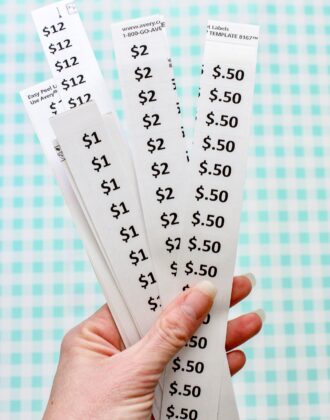
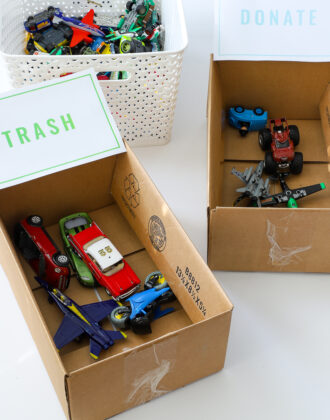
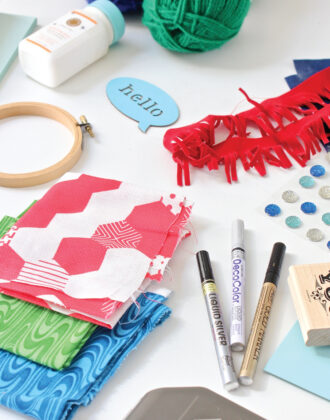
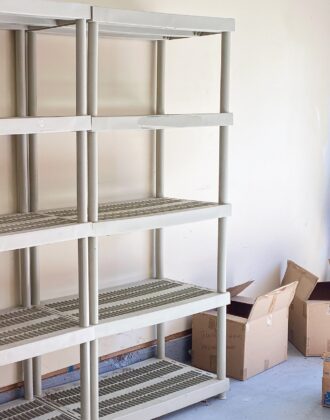

10 Comments on “10 Tips for an Awesome (& Profitable) Garage Sale”
Awesome suggestions!! I decided after my last garage sale (over 10 years ago) that I would never do one again. I was exhausted by being haggled! It just wasn't worth it. You gave great tips that I could have used. Thanks 🙂
Great tips! My sister is organizing her first yard sale next week and I’m sure she’ll find your advises very helpful. I’m definitely recommending your post to her. Thank you for sharing!
Awesome Yard Sale Tips, Megan! I found your post through Pinterest(and I’m so glad!) You make a good point about getting books and things up off the ground at your Yard Sale. I for one have a hard time seeing stuff on the ground, let alone bending over long enough to look through it all!
Also, Kudos on having an HONEST TO GOODNESS YARD SALE…
I LOVE that you and your mom had a high-tech scale on-hand and sold fabric by the yard, which technically qualifies as a “YARD SALE” (pun intended LOL!) Brilliant! Fabric and scraps really do sell like hot cakes, don’t they?
Thanks For your tips i think i will try your sugestion
These are terrific tips. Thank you!
Have you ever tried TallySheet – http://www.tallysheetapp.com? It is an app to help keep track of sales using your phone. I used it in our last sale it was a huge help.
As a teenager I worked in a large chain fabric store and once a year was inventory – everyhing in the store was counted – but the fabric was actually weighed. They would gather all of one type of fabric, count how many bolts and weigh the bunch of them. They would have us measure several fabrics and weigh the cardboard bolts to build their database – by sampling different fabrics at different stores the database was built and refined over time. Obviously different fabrics weigh more or less per yard but also different manufacturers used cardboard bolts that were heavier or lighter. I always was glad we didn’t have to measure out all the fabric in the store!
Hi, I was wondering if you had any tips on hoe to do clothing without a clothes rack? I have a lot (A LOT) of clothing and not enough rack space to hang it all. Thank you!
Thank you for an awesome post! Love all the tips and will certainly apply it to all of my sewing stuff 🙂
For us avid garage salers it would be nice to have a what to do after your garage sale. It is so frustrating to go to a sale and it not be happening. . Would be nice to have a garage sale edicate post. Clear easy to read signs, post your signs with arrows, if your sale is on the right post the sign on the right, don’t block other peoples driveways, don’t park in front of the signs, Take down your signs, delete your advertising, keep your pets at home, when advertising post the address with a popular landmark don’t forget to post the hours.
Great post!
Do you have any suggestions for when one has VERY limited yard space to do a sale (primarily the driveway and sidewalk easement)?